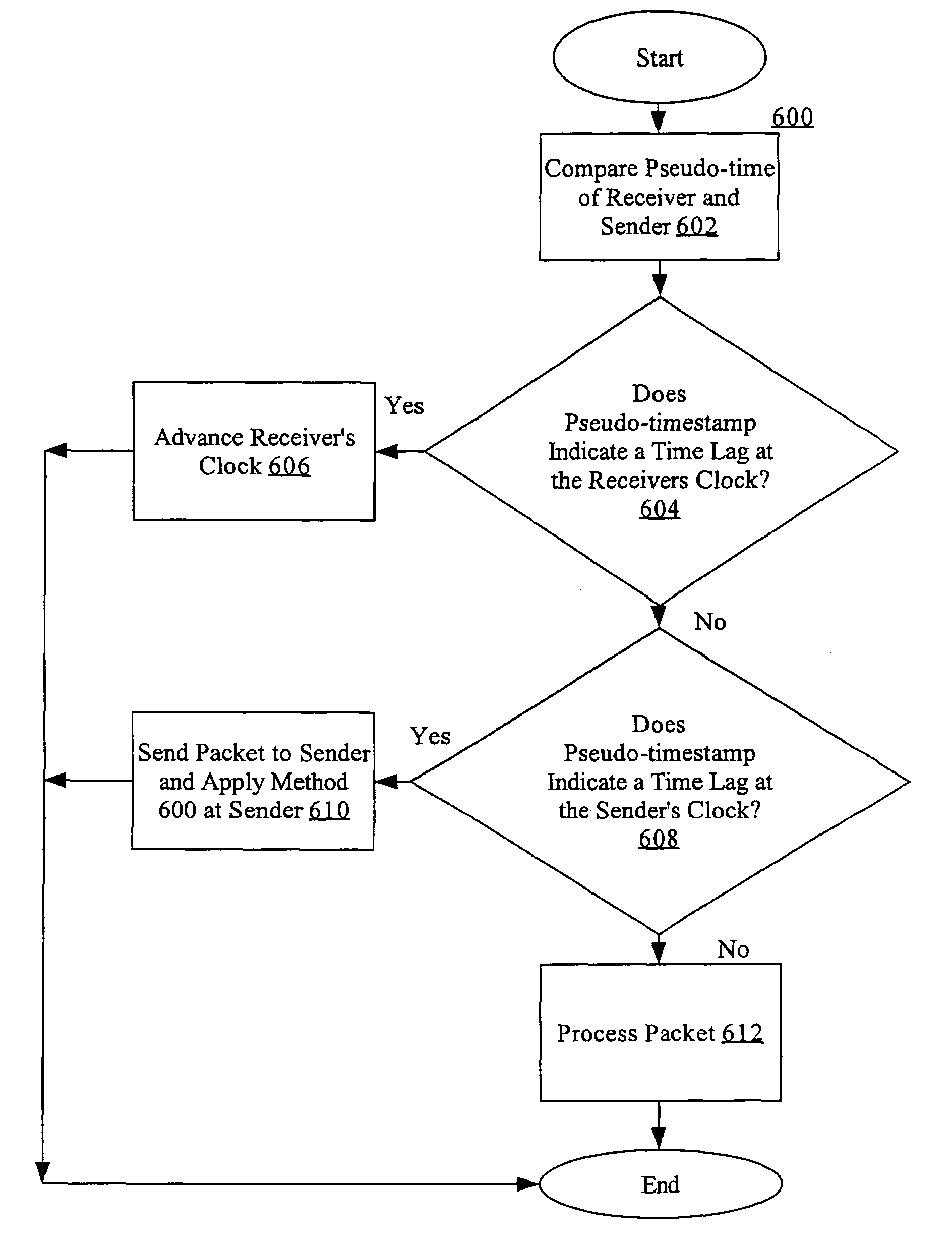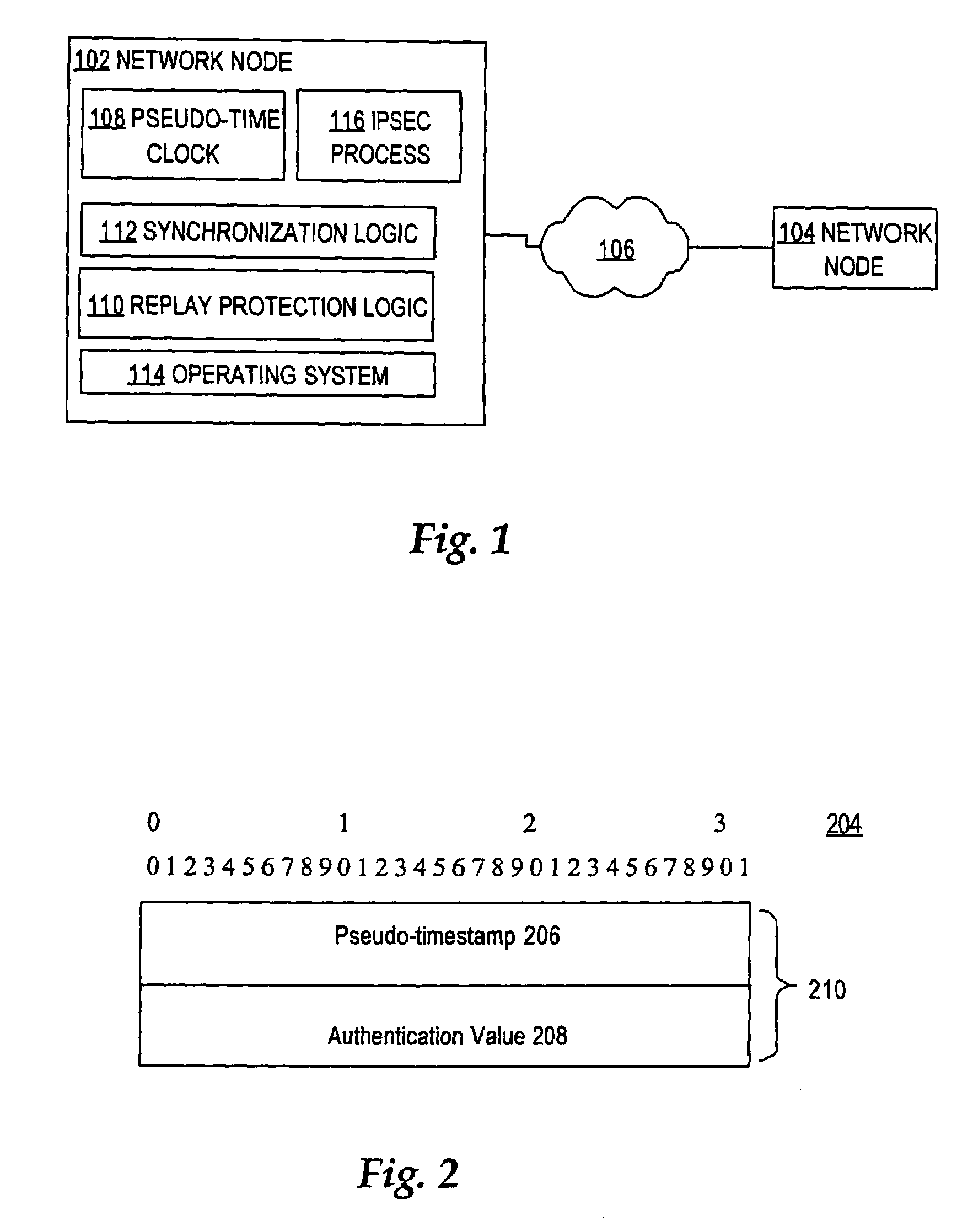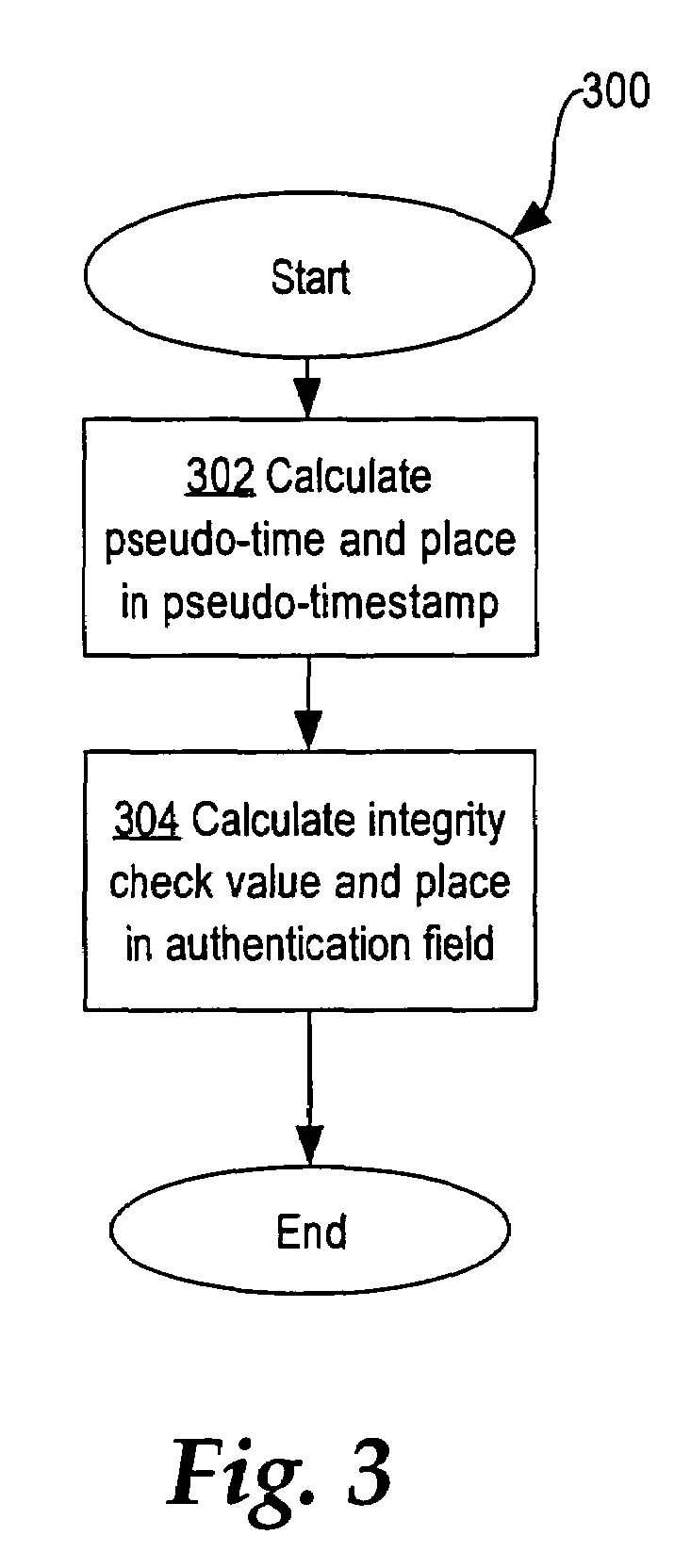Method for self-synchronizing time between communicating networked systems using timestamps
a networked system and time synchronization technology, applied in the field of network security, can solve the problems of wasting resources in processing replayed packets, sntp and other time synchronization mechanisms are difficult to use, and replay could be disastrous
- Summary
- Abstract
- Description
- Claims
- Application Information
AI Technical Summary
Benefits of technology
Problems solved by technology
Method used
Image
Examples
Embodiment Construction
[0021]A method and apparatus for synchronizing a pseudo-time clock of a sender of a packet and a pseudo-time clock of a receiver of the packet are described. In the following description, for the purposes of explanation, numerous specific details are set forth in order to provide a thorough understanding of the present invention. It will be apparent, however, to one skilled in the art that the present invention may be practiced without these specific details. In other instances, well-known structures and devices are shown in block diagram form in order to avoid unnecessarily obscuring the present invention.
[0022]Embodiments are described herein according to the following outline:[0023]1.0 General Overview[0024]2.0 Structural and Functional Overview[0025]3.0 Clock-Based Replay Protection[0026]3.1 Overview[0027]3.1.1 Pseudo-time[0028]3.1.2 Pseudo-timestamp[0029]3.1.3 Pseudo-timestamp Placement within an IPSec Transform[0030]3.2 Use with IPSec Authentication[0031]3.2.1 HMAC-SHA-1 Inclu...
PUM
 Login to View More
Login to View More Abstract
Description
Claims
Application Information
 Login to View More
Login to View More - R&D
- Intellectual Property
- Life Sciences
- Materials
- Tech Scout
- Unparalleled Data Quality
- Higher Quality Content
- 60% Fewer Hallucinations
Browse by: Latest US Patents, China's latest patents, Technical Efficacy Thesaurus, Application Domain, Technology Topic, Popular Technical Reports.
© 2025 PatSnap. All rights reserved.Legal|Privacy policy|Modern Slavery Act Transparency Statement|Sitemap|About US| Contact US: help@patsnap.com



